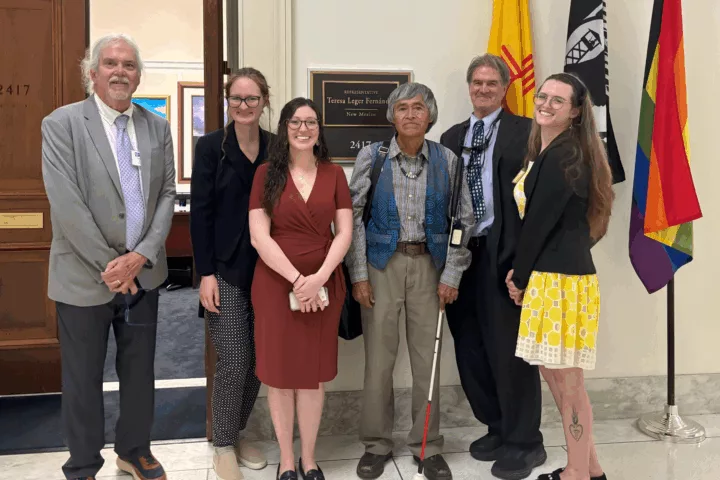
On January 29, 2019, DOE’s Office of Enterprise Assessments notified Nuclear Waste Partnership, LLC (NWP), the managing and operating contractor for the Waste Isolation Pilot Plan (WIPP), of its intent to investigate heat stress-related events and chemical exposures at WIPP. The events, occurring from July through October 2018, include multiple overexposures to hazardous chemicals, including carbon tetrachloride, nitrogen dioxide, and sulfur dioxide, as well as a series of heat-stress incidents.
My research of DOE’s Occurrence Reporting and Processing System (ORPS) found a report relating to the overexposure of a WIPP worker to carbon tetrachloride, which was used in large amounts to process plutonium.
After exposure to high levels of carbon tetrachloride, the nervous system, including the brain, is affected. Such exposure can be fatal. The liver is especially sensitive to carbon tetrachloride since it contains a large amount of the enzymes that change the form of the chemical. The kidney is also sensitive to carbon tetrachloride.
The ORPS Report shows weeks passed while the lapel monitors are analyzed until WIPP officials were notified.
FIRST EXPOSURE DETAILS:
8/6/18 – Lapel monitor sample was collected after waste handling activities were completed.
8/8/18 – Sample was shipped to laboratory for analysis.
8/15/18 – Lab received sample.
8/17/18 – Sample was analyzed at lab.
8/20/18 – Lab report was received at WIPP. Report identified 11 ppm of carbon tetrachloride for sampling period; calculated TWA of 7.33 ppm; ACGIH occupational exposure limit – 8 hour TWA of 5.0 ppm; ACGIH STEL of 10 ppm; and OSHA exposure limit of 10 ppm.
9/4/18 – Results entered into WIPP Industrial Hygienist (IH) database.
10/10/18 – Results validated by WIPP IH group. IH personnel made notifications to management.
10/12/18 – FSM received notification of 8/6/18 readings. FSM directed an operational work pause in CH Bay and categorized the issue as an ORPS reportable occurrence.
10/16/18 – Work pause was lifted after it was verified there was no waste in the CH Bay or in route from the waste stream being worked on 8/6/18.
10/17/18 – A Fact Finding meeting was conducted.
SECOND EXPOSURE DETAILS:
10/2/18 – Lapel monitor sample was collected.
10/18/18 – Lab received sample.
10/20/18 – Sample was analyzed at lab.
10/24/18 – Lab report was received at WIPP. Report identified 8.5 ppm of carbon tetrachloride for sampling period; calculated TWA of 6.4 ppm; ACGIH occupational exposure limit – 8 hour TWA of 5.0 ppm; OSHA exposure limit of 10 ppm.
10/24/18 – Results entered into WIPP IH database.
10/24/18 – Results validated by WIPP IH group. IH personnel made notifications to management.
10/24/18 – FSM received notification of exposure level and categorized the issue as an ORPS reportable occurrence. NOTE: Because this exposure occurred after it was determined that none of the waste stream remained in the CH Bay or was in route (see first exposure details for 10/16/18) no work pause was initiated.
Defense Nuclear Facility Safety Board (DNFSB) Reports show this to be an ongoing problem. The October 5, 2018 Report states:
Underground Ventilation. NWP paused work after a worker felt ill while doing ground control work near panel 7 in the underground. Potential causes of his distress included heat stress and underground air quality. Later, a second incident occurred during which a worker became ill after working near panel 7. There are indications that the worker might have been exposed to high levels of nitrous oxides. WIPP is evaluating both cases. Low airflow conditions remain a significant underground worker safety challenge. NWP is evaluating options to increase the underground air flow before the SS CVS is completed and operating.

